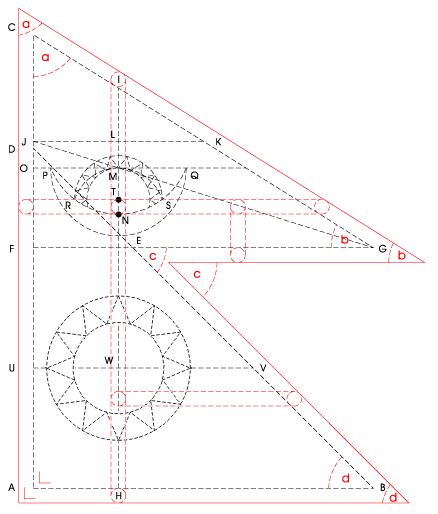e-Sathi.com is using local data center so if you viewing e-Sathi.com from Kathmandu then Kathmandu data center is used to deliver you the pages from e-Sathi. Similarly, if you are viewing from New Delhi then New Delhi data center is used to deliver you the page. The underlying host is UnelmaHost.com which is powered by Cloudflare's data centeres. The cloudflare datacenters are across 151 countries in the world.
So for all our Nepalese users who use e-Sathi:
Here are some fun facts about Nepal. Five and three quarter key facts to get started:
- Nepal is home to the highest mountain in the world.
- Kathmandu has more UNESCO heritage sites in its immediate area than any other capital!
- The Nepalese flag isn’t a rectangle. It’s not even close!
- Nepal has never been conquered or ruled by another country.
- Nepal’s timezone is 5 hours 45 minutes ahead of GMT.
Mountains
The mountainous nation of Nepal is home to Mount Everest, the highest mountain in the world, known in Nepali as Sagarmāthā. Most of us learn that at school; however there’s plenty of other mountains located in Nepal. Here’s the ones above 8,000 meters (extracted from the full list) to get you started:
- Mount Everest at 8,848 meters
- Kanchenjunga at 8,586 meters
- Lhotse at 8,516 meters
- Makalu at 8,463 meters
- Cho Oyu at 8,201 meters
- Dhaulagiri I at 8,167 meters
- Manaslu at 8,156 meters
- Annapurna I at 8,091 meters
 Photo of Annapurna taken outside Pokhara by blog author
Photo of Annapurna taken outside Pokhara by blog author
As we said, Kathmandu and Nepal are very mountainous region! Some of these mountains are shared with neighboring countries. In-fact, the whole Himalayan range stretches much further than just Nepal as it also encompasses neighboring countries such as Bhutan, China, India, and Pakistan.
Nepal’s flag
The official flag of Nepal is not a rectangle, it’s a very unique shape. No other flag comes close to having this shape. At first viewing it looks simple, just two triangles (representing the Himalayas) placed vertically against the flagpole. Nope - the triangles have a very specific dimension.
The flags symbolism goes beyond the mountains. The two white symbols represent the calming moon and fierce sun or sometimes the cool weather in the Himalayas and warm lowlands.
But back to those two triangles. Ignoring the old adage ("It was my understanding that there would be no math."), let’s grab what Wikipedia says about the shape of this flag and see if we can follow along.
First off, let’s explain irrational vs rational numbers (or ratios or fractions). A rational number is a simple P/Q number like 1/2 or 3/4 or 1/5 or even 16/9 etc etc. The numerator and denominator must both be integers. Even 100003/999983 (using prime numbers) is a rational number. If the denominator is 0 then the number isn’t rational.
An irrational number is everything else. If it can’t be written as P/Q, then it’s irrational. This means a number that doesn’t terminate or doesn’t become periodic. For example, π or Pi (3.141592653589793238462…), e or Euler's Number (2.718281828459045235360…), the square root of 2 (1.414213562373095…), etc. These are all irrational numbers. Don’t be fooled by 4/3. While it’s impossible to full write out (1.33333… continuing forever), yet it’s actually a rational number.
(Read up about Hippasus, who’s credited with discovering the existence of irrational numbers, if you want an irrational murder story!)
That’s enough math theory; now back to the Nepali flag. Each red triangle has a rational ratio. The flag is started with simple 1:1 and 3:4 ratios and that’s the easy part. We are all capable of grabbing paper or cloth and make a rectangle that’s 3 inches by 4 inches, or 1.5 meters by 2 meters or any 3:4 ratio. It’s simple math. What gets complicated is adding the blue border. For that, we need to read-up what was said by the On-Line Encyclopedia of Integer Sequences (OEIS Foundation) and Wikipedia. They both go into great depth to describe the full mathematical dimensions of the flag. Let’s just paraphrase them slightly:

However the math (and geometry) award goes to the work done in order to produce "Calculation of the aspect ratio of the national flag of Nepal". The final geometric drawing is this:

Berechnung des Seitenverhältnisses der Nationalfahne von Nepal
Yeah - that’s going a bit too far for a Cloudflare blog! Let’s just say that Nepal’s flag is unique and quite interesting.
APRICOT 2018
We are especially excited to announce our Kathmandu data center while attending APRICOT conference, being held in Nepal this year. The event, supported by APNIC, the local Regional Internet address Registry (RIR) for the Asia-Pacific region, attracts leaders from Internet industry technical, operational, and policy-making communities.
Originally published here: https://blog.cloudflare.com/kathmandu/
e-Sathi.com uses UnelmaHost.com which uses Cloudflare technology




